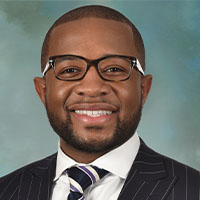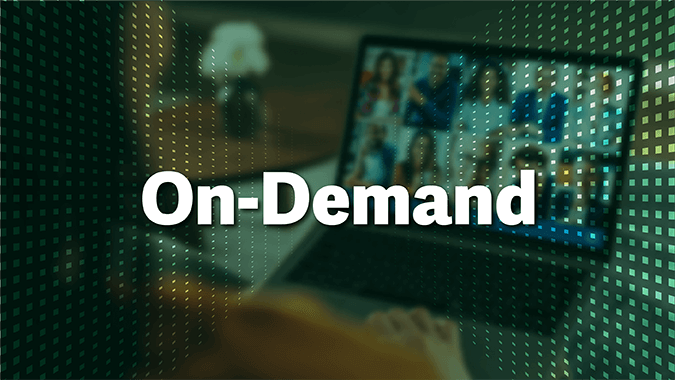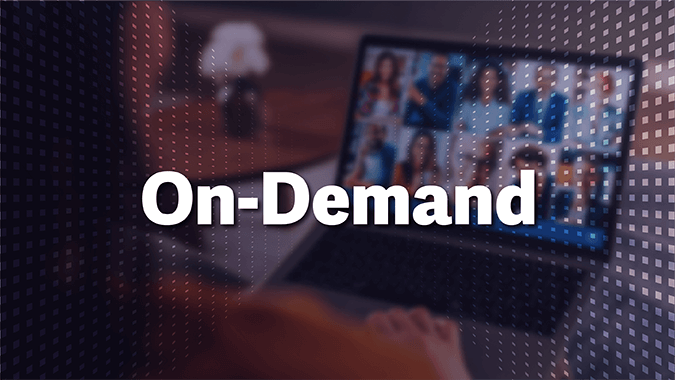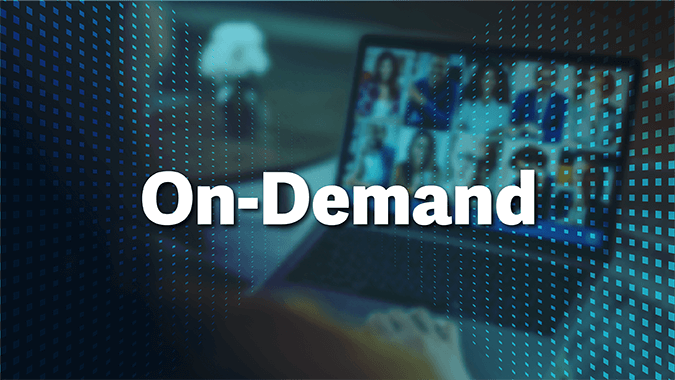
The Power & Responsibility of a Leader: Practical Steps to Own Your Impact
- Published
- Oct 6, 2020
- Topics
- Share
Nkrumah Pierre, Director for EisnerAmper’s Friends of the Firm Program and leadership coach and strategist Raabia Shafi, discuss the opportunity to level up your personal leadership with practical self awareness. Raabia will offer three introspective exercises for boosting empathy for yourself and your team. These techniques will help you get clarity on your intentions, get a pulse on what it feels like to be on the receiving end of your leadership style, and tap into the resources in your personal and professional networks to help you evolve.


Transcript
Nkrumah Pierre: Hello and welcome to the Friends of the Firm Podcast part of the EisnerAmper Podcast Series. My name is Nkrumah Pierre and I am the Director of EisnerAmper’s Friends of the Firm Program. Today I’m joined by Raabia Shafi, Leadership Coach and Strategy Consultant. Raabia is also my executive coach, so I am proud and honored to have her with us today. Today we will delve into how to level up your leadership with practical self-awareness. So Raabia, what exercises can you share with our listeners today to help boost introspection on this leadership journey?
Raabia Shafi: From what I've seen, one of the most effective important things that you can do to develop your leadership skills is to really boost your own self-awareness, how are you showing up, what's happening with you internally that may be impacting your team and ultimately your customers. Remember, all eyes and ears are on you anyway, and you set the tone for the culture. So I would say to all the listeners out there who've maybe recently had an encounter with a direct report where your communication wires were crossed or perhaps you felt your jaw clench and your pulse racing because you did not know how to respond in that situation, or you just generally want to consider ways to use your role for good, I suggest you grab a pen and get some paper and we can engage in these three essential introspective exercises for your leadership.
RS: So the first exercise I would suggest is look inside and really check your intentions. So on a blank page, you can draw a horizontal line across the middle of the page. At the top of the page, write, "What are my intentions?" and think through what are your intentions when you find yourself in a disagreement with a direct report. Are you focusing on listening to them? Are you trying to help them grow? Are you trying to assert dominance or put them in their place or show them who's boss? Take down a couple of those notes. Then in the middle of the page, write down, "How do my intentions make me feel?" and note any thoughts or emotions or any physiological responses you might be experiencing when engaging in these situations with your employees.
The real purpose of this exercise is because, if you remember the bullseye, it all starts with you. So check what's going on internally with you emotionally, psychologically, and what are those intentions? Because that oftentimes can tap into the root cause of some of the conflicts that we were experiencing.
The second exercise is to look outside, and that's really looking outside of yourself and engaging in empathy. A big part of self-awareness is enhancing and boosting your ability to have empathy for others. So on page two, another blank page, you can draw four boxes and label each one separately, say, think, do, and feel. Put yourself in the shoes of the person on the receiving end of your leadership style. So for example, Nkrumah, as you had mentioned, Sue is the new colleague of yours, you can put yourself in the mindset of Sue who's on the receiving end of your leadership, and in each box, you can write at least one thing that may be true from that person's perspective as they interact with you. So you could think about, okay, when Sue and I are interacting with one another, what might she be saying? What might she be thinking? What might she be doing in terms of her actions and behaviors and what might she be feeling?
You can also try this scenario for times when you're in conflict or when things are going really well, and the whole purpose of this exercise is it's actually using a lot of this concept of design thinking or human centered design, which some of you listeners might be familiar with, which is experiencing deep empathy and getting yourself into the mindset or putting yourself in the shoes of another person can really open up some light bulbs in terms of how you might be perceived by the outside world and really help to tackle some of the blind spots that we might have for ourselves as leaders.
The third exercise is look around and really survey your resources. One of the things that I'm a big fan for is building a community, and oftentimes I really believe in this phrase, it's lonely at the top. I work with executives time and time again and I've heard them share, "After 30 years of working here at Raabia, I realized I just don't have any friends in this organization because someone always wants something or there's always an ulterior motive," and that can be really tough. At the same time, you're not alone, and so for this exercise, when I say look around and survey your resources, on the next page, it can be a blank page and you can draw a line down the middle and in the left column, you can write, "Leaders I admire," and list any leaders you hold in high regard, whether you know them personally or not, and why you find them admirable.
This could be a coach you had when you were on the tennis team or it could be a boss that you had when you were working on your college internship, or it could be the CEO of the organization that you're working with now. It could be a member of your family who is a leader that you admire. Really include moments of when and why the leader made you feel empowered and productive and confident, and being able to answer the why is so essential because the cool thing is just as much as we have examples of poor leadership around us, we also have some solid examples of really, really excellent leadership as well.
So once you've done that, in the right column, you can write down, "My support network," and I'd like for you to list at least three people you could reach to for guidance. Think of anyone in your extended community who can help light your way as you push yourself to make a positive shift in your leadership style and your capabilities. Here's a hint, Nkrumah, if I may say, for anyone who needs some help, I'm here also and I do this work day in and day out. So you can list me as one of those people if you'd like.
Lastly, what to do at the bottom of page three is consider one actionable step that you can take toward being a better, more supportive leader for you and for your team, and you can write that one step at the bottom of page three and try to commit to getting it done by tomorrow. I can share with you, this is all about small changes and big impact. It doesn't mean you have to totally switch who you are as a person or start doing things that feel inauthentic.
But if it means, hey, you know what, when I walked down the hallway or now that we're working remotely much of the time, if it means just checking in with a colleague of yours, not necessarily about a to-do list or a task that needs to get done, but maybe you just want to check in and say hi, that could be an actionable step that you can take to be a better leader, a more supportive leader. Because when you think about those times where other people have made you feel empowered and you felt productive and confident, it's oftentimes going to be those small tweaks in your behavior that you can make that can have a solid really high return.
NP: Raabia, you are absolutely right and you are 100% part of my support network. I will tell you, I think when we first met, wow, six years ago, I had met countless executive coaches. It's a lot about fit and it's also that authenticity that you speak about. What I just heard you speak, I was happy, one, with your approach and just the authenticity that shines through when you spoke. Then you spoke about your background, the clients you had, and I was like, "You know what? I have to figure this out and when I finally do figure it out, we're going to work together in some capacity." We committed to that. Then I landed at EisnerAmper and then we engaged in working together. But what I'll tell you is I was always anti-executive coach. I'm like, "I should be able to do it myself. If I'm a good leader, I should be able to figure it out on my own."
You think about LeBron James, you think about Kobe Bryant when he was alive, they all had awesome coaches. So why aren't executives who realistically are athletes in a sense, why don't all great executives have a coach? Then I found out a lot of them do, which is why they're great executives, right? So it just makes so much sense.
RS: Yeah, it does. There's that saying, even the best athletes have coaches, and I totally appreciate what you're saying. Here's what I would say, Nkrumah, if I wanted to get more into sales strategy and friends of the firm and business development, that's a huge expertise of yours, and over the years as you've been cultivating yourself as a master connector and you've been building that technical skillset, I've been spending that time building this technical skillset of leadership and coaching. So hey, it takes a village, so I appreciate it. It can work both ways for sure.
NP: So true. So Raabia, thanks again. This has been awesome. Thank you for the nuggets of wisdom and just expertise speaking about committing to something, right? So even when you and I have been going through our coaching, one of the things you said to me is, some of the feedback during my 360 degree review from some of my colleagues is that I say yes too much, right? I'm spreading myself too thin, and one of the things I've been working through and working on is not necessarily saying no more, but being more realistic with my answers, right?
So if I do say yes, right, put some kind of timeline on it, right? So if I say, "Yes, I can do that. I can't do it right now, but I can get to that within the next," and put a deadline, whether it be one week, two weeks, three weeks, or, "Can we move this conversation out a week?" and then put a deadline on it. That has been really helpful with, one, being more accountable, and two, just being more efficient with my time. So I'm definitely committed to that. Power of no is also super important, being a leader and being someone who is successful because you can't, it's impossible to say yes to everyone and everything. Of course, to my boss and the management team, of course, right? I'm not saying no often there.
But there are a lot of colleagues and even with friends of the firm, everyone wants us to help them. But even Sue and I have had the conversation, sometimes we just have to say no. We play CFOs, controllers and heads of HR. That's our lane. You talked about the bullseye, the bullseye has a few rings and those are the rings. If it's outside of that, we say no, and that's not no forever, but that's no for the present time.
RS: Absolutely. Yeah. I think that in terms of being able to hold yourself accountable to what you can promise and what you say yes to or what you say no to, that's really part of being able to show up as powerfully as possible every day for yourself and for your team and ultimately for your clients. Really, I'm hoping that these helpful moments of introspection, if you do in fact, as listeners go through these three exercises, I hope at a minimum they can highlight the sure fact that leaders do cast a tall shadow, and there's always a more effective way to lead, and most importantly, you have an abundance of resources to get you where you need to be.
If listeners are interested in the backstory for any of these exercises, it was actually inspired by a friend of mine who had a really tough interaction with his boss not too long ago. So feel free to check out my website on the perspective page at www.rshaficonsulting.com, and I'd really love for you to connect with me or follow me on LinkedIn and Instagram at Raabia Shafi Consulting, and I want to hear how these exercises landed for you, what came up as you wrote your responses, what did you find most difficult, and did you think about doing the exercises, but decided not to? So there's always room for conversation and I think we have a lot to learn together.
NP: I will say I have definitely noticed the refresh of your social media presence. It's awesome. I love the short videos on Instagram. I like them all the time and I listen to them often. Thank you for this valuable information and thank you for listening to the Friends of the Firm podcast, part of the EisnerAmper podcast series. If you missed our last podcast, or for more information about Friends of the Firm, please visit EisnerAmper.com/FOF.
Also Available On
What's on Your Mind?
Start a conversation with Nkrumah
Receive the latest business insights, analysis, and perspectives from EisnerAmper professionals.





